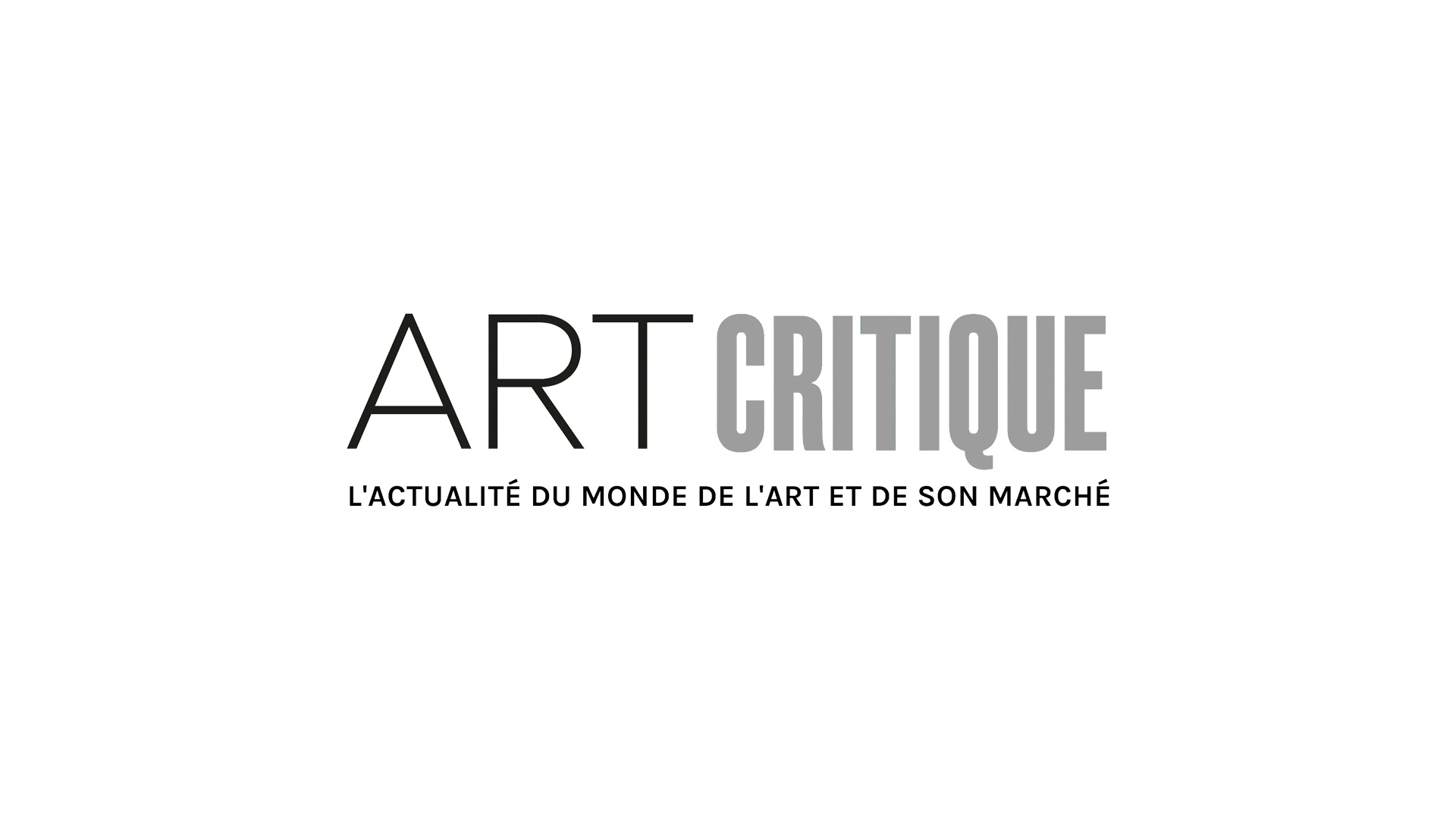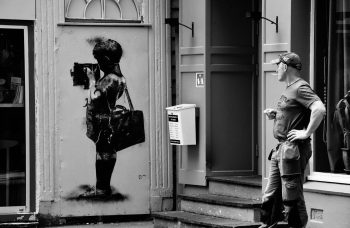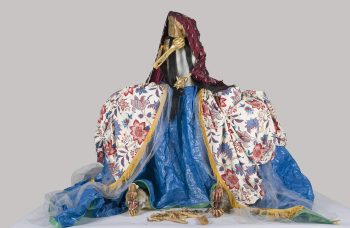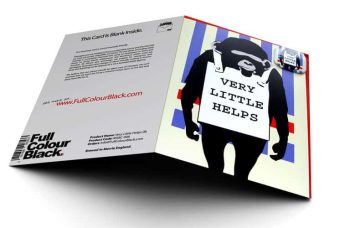Clemence Vazard is a French artist who, in 2016, began working with women to record the story of their first experience of harassment. She brought the stories together to create an immersive, visual and sound installation called #monpremierharcelement (#myfirstharassment). Then #metoo happened.
Clemence has exhibited internationally and is recognized not only for her art but also as a leader in feminism. Recently, Art Critique had the opportunity to ask Clemence about her #monpremierharcelement project, the effects it had on her and the women she worked with, and how she plans to revisit similar themes in upcoming projects. It only seems fitting to share her work and experience on International Women’s Day.
Art Critique: Issues concerning sexual assault and harassment, fair treatment, and highlighting injustices offer such innate motivation for a project such as your own. However, when you began your #monpremierharcelement project, it was before the #metoo movement really took hold. What made you decide to create your series?
Clemence Vazard: Well, it’s a long story! It was late 2016 when I started working with women who experienced harassment. I was haunted by a revelation: I was personally harassed 10 years ago and as no one told me how to address it, so I buried it. Even the policeman who listened to my statement didn’t seem to take it seriously. He asked me very specific questions that ticked his formatted boxes, but never allowed me to tell the whole story so that I could feel a bit relieved, supported and believed… And the emergency psychiatric team made my trauma even worse by telling me that my prosecutor would have wanted to rape me. But what led me to my art project was that almost ten years after, I finally started to tell this story to my girlfriends, because I felt that I had to tell it at some point. They listened to me, they believed me without question, and they started to share similar stories, all of which we now define as ‘harassment’. Every time I told my story, dozens of stories came from the women and girls I was talking with. Stories of ordinary sexism in the workplace or sexual assault within the family, or harassment on the street on the way to work… I felt that I had to transform all these stories into powerful artwork.
AC: How did you find the women you worked with? Given that your work dealt with such a personal & painful topic, how did you encourage women to participate? Did you get any feedback from the women who did participate on what the project meant to them?
CV: At the start of 2017 I was offered a residency in a community centre in a multi-cultural and working class neighbourhood we call ‘La Chapelle’ in Paris. I met many women from the local community and I also made a call for participation on social media for the #monpremierharcelement project. At this point, it was actually very difficult to get people to understand and support my project because it was yet to go through a major awareness phase. The second obstacle was encouraging them to accept that their story would be recorded, and their portrait photographed.
In the end, 12 women responded. I still keep in touch with them, some of them I meet regularly. All of them have seen the show and are really proud of their participation. It is a powerful feeling to think that your intimate story is provoking social change.
What’s funny in a way is that I had my first #monpremierharcelement exhibition opening on the weekend when the Weinstein case came out. Since then, people started telling me I was a forerunner… some of them even said I was an opportunistic woman!

AC: How did the project take shape? Did anything surprise you about the process of creating #monpremierharcelement?
I knew from the very beginning that I wanted to make women’s voices to be heard. I really felt the artistic process would be in the power of the narrative, for those women to reclaim their own story.
So, I started with individual recording sessions where I asked them this one question: ‘what is your first memory of harassment?’ I then listened to the answers and helped each woman to tell her story from the start to the very end. My listening method is inspired by psychologist Alice Miller’s concept of ‘enlightened witnesses.’ At the end of the recording session, I was also carrying the weight of their stories, relieving them by believing and supporting them. What surprised me were the expressions on their faces at the end of the session: a mix of relief, determination and sorrow.
It was at this precise moment that I decided to take their portraits and turn this art project into a sound and visual installation.
I then used my collage technique for both visual and sound. I gathered their voices and stories in a sound artwork where you can feel the power of their self-told story. For their portraits, I fragmented the photographs to represent the memory process and the different layers of one story.
AC: How did the process of putting together #monpremierharcelement affect you as an individual and an artist?
CV: What I want as an artist is to ask the questions that are never asked and give women the right and opportunity to respond for themselves.
The first harassment we experience as a woman is the first gender trauma. It is the very first time a woman (more often, girl, when it happens) learns about her gender and what it means as a dominated status. This is more a deep feeling than about a clear analysis of the event and its consequences. But this feeling then takes over your body and thoughts: Am I guilty for what happened to me? Do I need to act and look differently from what I want/am? Am I enough xxx or too xxx? Does that mean men have rights over women? Does “No” mean “Yes”? …
With regards to the word “harassment”: I deliberately chose “harassment” to relate to the multiple layers of gender violence that a woman can experience from a very young age and which doesn’t decrease but evolve as she grows up. It starts with gender education that teaches you how to be calm and smiley, then at school until university where you realize you don’t get the same opportunities as men. From your first job to the last, you are disqualified and not offered the position you deserve. Within the family, we are starting to get statistics about domestic violence and feminicides.
So, this affects me both as an individual and an engaged artist. When you experience your first harassment, you realise the brutal and raw reality of being a woman in our society. You are suddenly aware, insidiously and violently, that being a woman is a permanent struggle. Once you know it, life becomes a battleground.
AC: You plan to re-examine the stories and experiences of women now that we’ve moved into a post-#MeToo climate in your upcoming project, what can you tell us about this? Do you have any expectations for what you might encounter? What lessons did you learn from #monpremierharcelement which will inform your new project?
CV: #metoo was a revolution. The rules were changed. Women feel that they can legitimately speak up and have a better understanding of how to identify and name what harassment and rape is. In France in 2018, complaints of rape increased by 17%. It’s a fact: women speak up now more than ever before!
For this next step of #monpremierharcelement project, I hope to engage women from different communities to openly speak and share their stories. The lesson I learned is that this first harassment memory affects every woman. I created this first project in France, and I am convinced that I can pursue it in many countries, with different cultural issues that impact women. I am really looking forward to exploring the universal yet intimate scope of the #monpremierharcelement project.
I also want to put together a collective workshop on this subject, for women to be able to share their stories with other women. What I look at with a positive feeling now is that sorority is becoming more and more obvious in today’s relationships. I think that we now understand that we need to build a powerful team to enter the battleground of life and get through it together.

AC: Though you’re responding to current events, the issues you so intimately work with have persisted for generations. Are there any artists, living or dead, who have significantly inspired your works or inspired you to wrestle with such a difficult topic?
CV: I must say I get my main inspiration from the women I give a voice to. They are my medium of choice! When I started my art practice with collage 15 years ago, I was striving to build my identity as a woman and created huge art murals with images from women magazines to question the contrasting layers of womanhood and reject female stereotypes.
I now draw my inspiration mainly from collage artists such as Hannah Hoch and feminist artistic movements from the 1970s. Barbara Kruger collages gathering female portraits and statement texts (Your body is a battleground, for example) were a reference and still are in my use of words in my artwork.
The feminist Mexican artist Monica Mayer is also worth mentioning. She encourages women to speak about their experiences by asking them direct questions and transforming their answers into artworks. For her art installation ‘The Clothesline Project’ she wrote on the top of hundreds of small pink ballots ‘As a woman, what I dislike most about my city is…’ and engaged participants to write their responses, which were then hung on a clothesline. Monica Mayer wrote me a letter right after my first exhibition of #monpremierharcelement in Paris to invite me to do this project in Mexico, which I would love to do soon!
AC: How do you hope that your #monpremierharcelement project and your upcoming project might affect those affected by sexual harassment and/or abuse?
CV: My previous project has taught me that when suffering, speaking about our issues, kick starts the recovery process. Once you point out the poison it’s easier to find the antidote.
Recently, when Marine Tanguy from MTArt Agency told me about the ‘Visual Diet’ project, I felt I had to give to young women an opportunity to speak about their experiences with social media and the impact it had on their mental health.
So, for the Visual Diet campaign, I created a sound artwork called ‘Hey Siri, why don’t I look like that girl on Instagram?’
I have collected testimonies from young women who share their experiences of social media and transformed them into Siri female voices. The depersonalization of these women’s intimate stories through synthetic voices echoes the filtered images, retouched selfies and over-played scenes that we scroll through every day on social media. What I am creating with this artwork is a free platform where social media victims can speak out and finally tell the truth about their struggle and suffering.
I want my artworks to encourage women to reclaim their own stories, to allow me to build an authentic, strong, empowering History of femininity.





